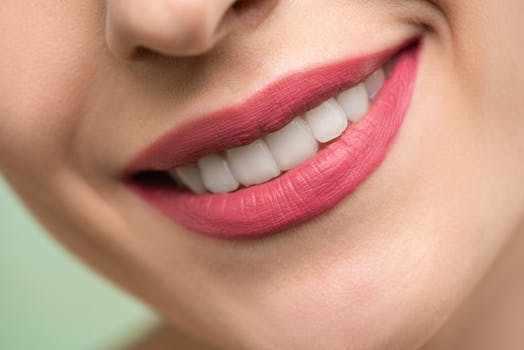Most Effective Teeth Whitening Solutions for a Brighter Smile
Having a bright, white smile is often associated with confidence and good oral hygiene. Over time, factors like food, drinks, smoking, and aging can lead to teeth discoloration, making many people seek effective solutions for teeth whitening. With a variety of options available today, from professional treatments to over-the-counter products, choosing the right method can significantly impact the results and your overall dental health.

Understanding the pros and cons of different teeth whitening solutions can help you make informed decisions about which option best fits your needs and budget. Whether you're aiming for a quick fix or a long-term solution, it's essential to weigh the effectiveness, safety, and cost of each method. Let's break down some of the most effective teeth whitening options to help you achieve a brighter smile.
1. Professional In-Office Teeth Whitening
One of the most effective methods for teeth whitening is professional in-office treatment performed by a dentist. These treatments use high-concentration bleaching agents that deliver noticeable results in just one session. Dentists often use tools like laser or light-assisted technology to enhance the whitening process.
- Advantages: Fast results, customized treatment, and monitored by a professional to ensure safety.
- Disadvantages: Higher cost compared to at-home methods, with prices typically ranging from $500 to $1,000 depending on the clinic.
This method is ideal for individuals looking for immediate results or those with severe discoloration. Sensitivity might occur temporarily after the procedure.
2. At-Home Whitening Kits
At-home whitening kits are widely available and include options like trays with bleaching gel, strips, and LED light devices. These kits are designed to provide convenience while delivering noticeable results over several days or weeks.
Popular brands such as Crest Whitestrips and GLO Science offer products that have been tested for safety and effectiveness. These kits generally cost between $30 and $150, making them more affordable than professional treatments.
- Advantages: Cost-effective, easy to use at your convenience, and widely accessible.
- Disadvantages: Results may take longer compared to professional treatments; uneven whitening is possible if not used correctly.
For best results, follow the manufacturer's instructions carefully and consult your dentist if you experience sensitivity or other issues.
3. Whitening Toothpaste and Mouthwash
Whitening toothpaste and mouthwash are everyday products designed to gradually remove surface stains from teeth. These products typically contain mild abrasives and small amounts of hydrogen peroxide or carbamide peroxide for whitening effects.
While these options are affordable (ranging from $5 to $20), they are not as effective at removing deep stains compared to other methods. Whitening toothpaste is best suited for maintaining results after undergoing professional or at-home treatments.
- Advantages: Affordable, easy to incorporate into daily routines, minimal risk of sensitivity.
- Disadvantages: Limited effectiveness on stubborn stains; results take time to become noticeable.
4. Natural Remedies: Do They Work?
Some people turn to natural remedies like baking soda or oil pulling as alternatives to chemical-based products. Baking soda acts as a gentle abrasive that can remove surface stains when used occasionally in place of regular toothpaste. Oil pulling involves swishing coconut or sesame oil in your mouth to reduce bacteria that may contribute to staining.
While these methods are inexpensive and chemical-free, their effectiveness is limited when compared to professional treatments or over-the-counter products. Overusing baking soda may also damage enamel over time if not done carefully.
5. Preventative Measures for Long-Lasting Results
Avoiding habits that lead to staining is key to maintaining a bright smile after whitening treatments. This includes limiting consumption of coffee, tea, red wine, and tobacco products, all common culprits behind yellowing teeth. Using a straw for beverages can also help minimize contact with your teeth.
Dentists recommend brushing twice daily with fluoride toothpaste and flossing regularly to maintain oral health. Scheduling regular dental cleanings can further prevent plaque buildup that contributes to discoloration.
A brighter smile is achievable through various methods tailored to individual preferences and budgets. Professional in-office treatments offer immediate results but come at a higher cost, while at-home kits provide convenience at a fraction of the price. Everyday products like toothpaste and natural remedies can complement these solutions but may require more time for visible outcomes. By combining effective whitening techniques with preventative care, you can enjoy lasting confidence in your smile.
